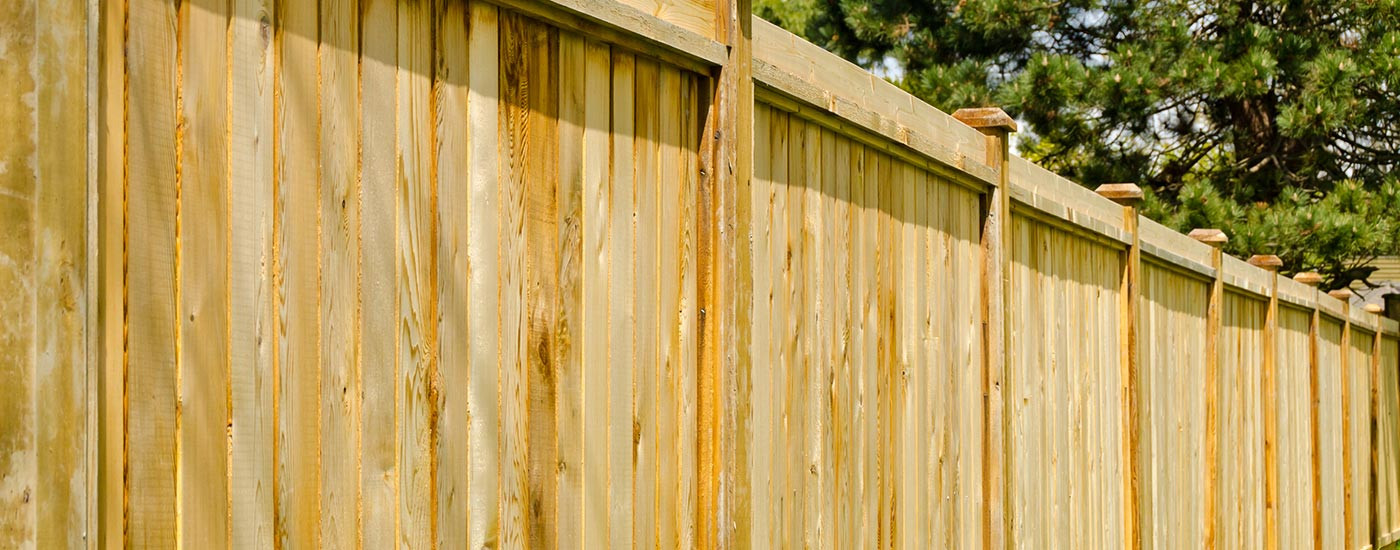If you don’t know your gravel boards from your picket pales, this glossary is for you. We have taken the most common fencing terms and fence types and explained them in easy to understand terms that every novice DIY-er can follow.
Fence panels – fencing supplied in the form of readymade timber panels. The most popular type of fencing, as it can be much easier to install, fence panels are available in a variety of styles, as described in our article Different types of fencing: a comprehensive guide to fence materials and their properties. Types of fence panel include closeboard, waney lap and decorative.
Fence post caps – these provide the finishing touch to timber fence posts and sit atop them. While not an essential addition to a fence, post caps have pros and cons and can prolong the life of your fence posts.
Fence post spikes – these are used to secure fence posts into the ground without the need to set the posts in concrete. Post spikes are metal and are driven directly into the ground. Fence posts are then slotted into them and secured in place.
Fence rails – timber rails are used in certain types of fencing such as post and rail fencing, where they are fastened between upright timber posts. For picket fencing, the rails have pales attached in an upright position.
Fence repair spurs – available in concrete or metal, fence repair spurs are used to reinforce fence posts that have become weakened or damaged, and will increase the strength of the post.
Gravel boards – available in timber or concrete, gravel boards are positioned at the bottom of fence panels, in contact with the ground. They maintain a distance between the panels and the ground, extending the life of the panel by protecting it from ground moisture, and they ensure there are no gaps at the base of the fence.
Picket pales – picket pales are used in the construction of a traditional picket fence. They are the evenly spaced boards that attach to horizontal rails and can be supplied with a pointed top, a round top or a straight top.
Pressure treated timber – as the name implies, this kind of timber has been treated under pressure and a chemical treatment applied which acts as a preservative. Pressure treated timber is more resistant to damage from moisture and insect infestation and will endure longer than untreated timber.
Postcrete – a post mix concrete that is ready to use and requires no mixing. Used for setting fence posts instead of concrete where time is a consideration.
Post and rail fencing – a style of fencing often used in rural settings. A simple fencing system, post and rail fences typically consist of two or more horizontal rails attached to upright, solid timber posts.
Timber fence posts – the main support structure for a timber fence. Posts are installed at regular intervals and fence panels are attached to them. Fence posts are pressure treated to reduce the risks from moisture in the soil. Fence posts can be made from timber, metal and concrete and are an essential part of any fencing.
Trellis – a type of decorative fencing, trellis is a panel of wooden slats set at 45 or 90 degrees to form an open pattern.
Wooden battens – a length of timber, squared off at each end, a batten is used to hold something in place. Used to secure trellis to a wall or to attach trellis to the top of a fence.
Concrete fence posts – the concrete equivalent to a timber fence post, concrete posts can be used with timber fence panels. Slotted and recessed concrete posts are available and are usually steel reinforced for added strength.
Eco fencing – an increasingly popular alternative to timber fencing, eco fencing is made from a composite material manufactured from 75% recycled products. It is available as eco boards, eco panel tops, posts, and post caps. Utility strips and all required fixings can also be bought.
Installing your first fence needn’t be daunting and our blog has lots of helpful articles relating to all aspects of fencing. If you have any questions or would like advice, please call us on 01205 359188 or send us an email at sales@withamtimber.co.uk

